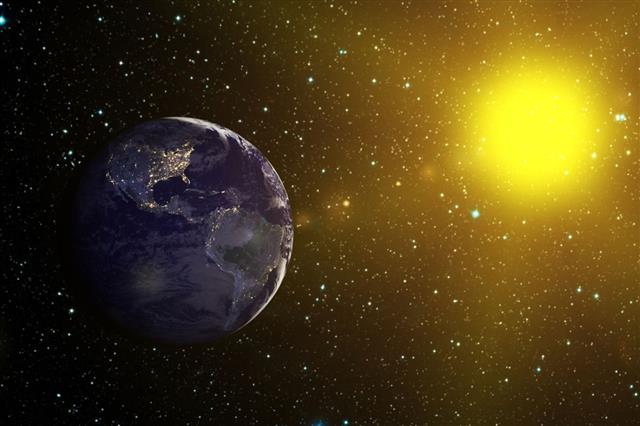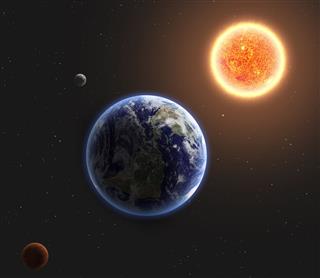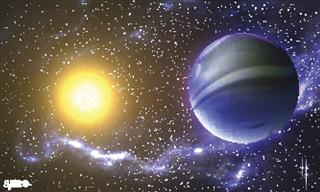
Though very few, there do exist a few people who are not sure which is bigger, the Earth or Sun; especially kids, who think that the Earth is bigger as the Sun appears to be very small when looked at from the Earth.
Too good to be true!
With an estimated diameter of 1,700,000,000 miles, VY Canis Majoris (VY Cma) is roughly about 1800 and 2100 times bigger than the Sun.
At times, even the simplest question can lead you to answers that explain a lot more than what you actually wanted to know. Amassing knowledge is never a bad thing, especially when it is about your own surroundings. Many people will argue that it is more than obvious that the Sun is bigger than the Earth. It is a universal fact, one might think. But so is the fact, that the Earth revolves around the Sun, and yet, 1 in 4 Americans believe that it’s the Sun that revolves around the Earth, and not the other way round.
As unbelievable as it may be, that was what the researchers at the National Science Foundation (NSF) found out when they conducted a survey in 2012―nearly 500 years after Copernicus came up with the heliocentric theory. Nevertheless, let’s not deviate from our topic. Let’s deal with the question at hand: is the Sun really bigger than the Earth?
Difference Between the Earth and the Sun
So, let’s begin with the basics. The Sun is a star located at the center of the Solar System in the Milky Way galaxy. The eight planets of the Solar System revolve around the Sun; planet Earth being one of them. Also known as the Blue Planet, planet Earth is the 5th largest planet in the Solar System, with a diameter of around 7,918 miles (12,755 km). While that may make the planet look massive, it is negligible as compared to the Sun, which accounts for 99.86 percent of the total mass of the Solar System. Add to it the fact that the Sun is just a medium-sized star―there are many stars which are much bigger than it―and you realize that our planet is just a minute object in the Universe.
Earth and Sun Size Comparison
Diameter
As the equatorial radius of the Earth is 3963.17 miles (6,378.1 km) and polar radius is 3949.93 miles (6,356.8 km), its mean radius adds up to 3,959 miles (6,371 kilometers). In contrast, the mean radius of the Sun is 432,450 miles (696,000 km). If these figures are taken into account, the diameter of the Sun adds up to 864,938 miles (1,390,000 km), which is 109 times the diameter of the Earth at 7,918 miles (12,742 km).

Volume
Similarly, the volume of the Earth is 1.083×1021 cubic meters, while the volume of the Sun is 1.412×1027 cubic meters. Simply put, the volume of the Sun is 1,299,400 times that of the Earth. This, in turn, means that you will be able to fit in around 1,300,000 planets the size of the Earth inside the Sun … that’s if you tried hard enough.

What About the Moon?
Even though the Sun and the Moon, both appear to be of the same size to the naked eye, the Sun is 400 times bigger than the lunar object, which has a radius of 2,160 miles. While the distance between the Sun and Earth is around 93,020,000 miles (149,669,180 km), the distance between the Earth and Moon is approximately about 238,900 miles (384,400 km). It is this difference in distance that makes both, the Sun and the Moon appear to be roughly of the same size.
At the end of the day, the relative size of the Earth, Jupiter, and the Sun can be represented as 1:10:100, which means that planet Jupiter is 10 times as big as the Earth, and the Sun is 10 times the size of Jupiter … or 100 times as big as the Earth―109 times to be precise.









